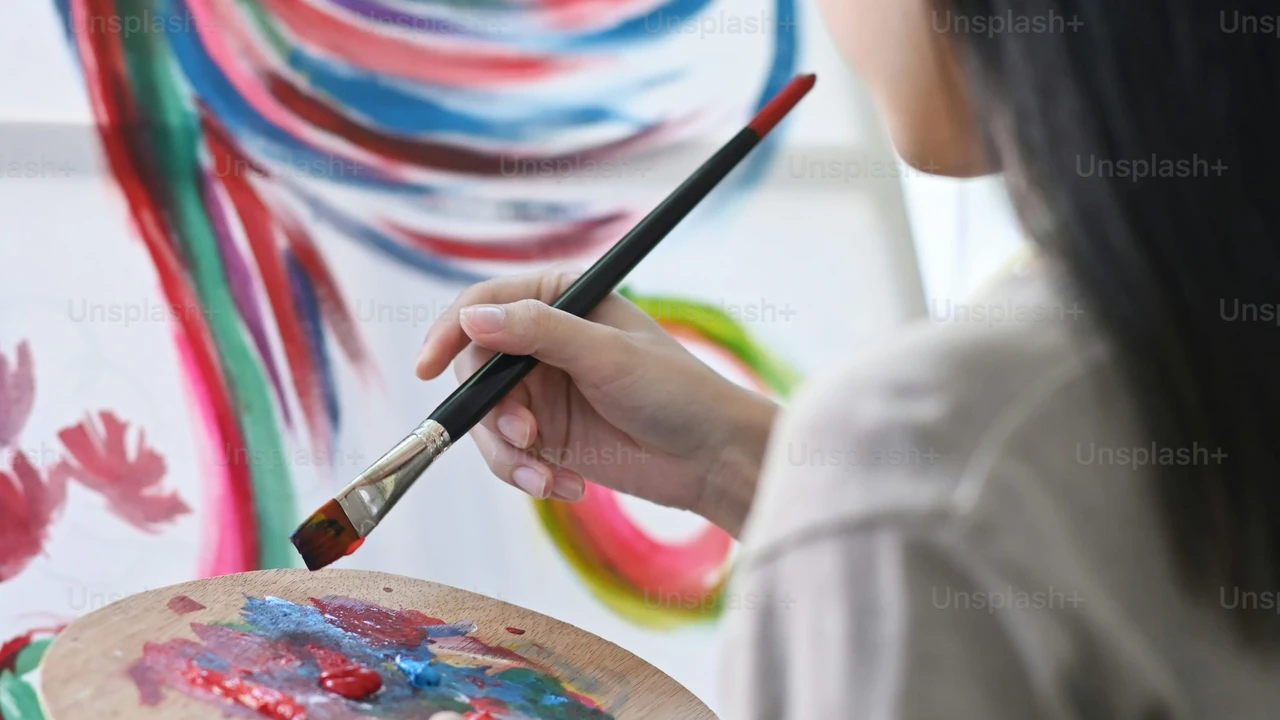Taiwanese Art: From Traditional to Contemporary
Sample meta description.

Understanding Taiwanese Art History and Cultural Influences
Alright, let's dive into the vibrant world of Taiwanese art! It's a fascinating blend of history, culture, and innovation. Think about it – Taiwan's been influenced by indigenous cultures, Chinese dynasties, Japanese colonization, and Western modernism. That's a whole lotta ingredients in the artistic soup!
Historically, traditional Taiwanese art was heavily influenced by Chinese painting styles, calligraphy, and folk art. You'd see lots of landscapes, portraits of important figures, and depictions of auspicious symbols. But things started to change, especially after World War II. Artists began to explore new styles and techniques, reflecting Taiwan's unique identity and its place in the modern world.
Traditional Taiwanese Art Forms Exploring Ink Painting and Calligraphy
Let's talk specifics. Ink painting and calligraphy are HUGE in traditional Taiwanese art. These art forms aren't just about putting ink on paper; they're about expressing your inner self, your connection to nature, and your understanding of Confucian principles. Imagine delicate brushstrokes creating misty mountains or bold characters conveying profound wisdom. That's the power of ink painting and calligraphy!
You'll often see themes of nature, such as bamboo, plum blossoms, and orchids, which represent different virtues. Calligraphy is also used to create poetic inscriptions, adding another layer of meaning to the artwork.
Contemporary Taiwanese Art Embracing Modernity and Innovation
Now, let's fast forward to the present day. Contemporary Taiwanese art is all about pushing boundaries and experimenting with new ideas. Artists are using everything from video installations to performance art to explore themes of identity, globalization, and social change. It's a real explosion of creativity!
One thing that's really cool is how Taiwanese artists are incorporating traditional elements into their modern works. They might use traditional ink painting techniques to create abstract compositions or combine calligraphy with digital media. It's a way of honoring the past while embracing the future.
The Impact of Japanese Colonization on Taiwanese Art Influences and Styles
The Japanese colonial period (1895-1945) had a significant impact on Taiwanese art. Japanese artists introduced new techniques and styles, such as Western-style oil painting and sculpture. Taiwanese artists also began to study in Japan, bringing back new ideas and influences.
This period saw the emergence of a new generation of Taiwanese artists who were trained in both traditional Chinese and Western art forms. They created works that reflected Taiwan's unique cultural identity and its place in the modern world.
Exploring Indigenous Taiwanese Art Traditions Motifs and Meanings
Don't forget about the indigenous cultures of Taiwan! They have their own rich artistic traditions, including weaving, carving, and pottery. Indigenous art often features motifs that are inspired by nature, such as animals, plants, and mountains. These motifs have deep symbolic meanings and are often used in ceremonies and rituals.
For example, the Paiwan people are known for their intricate wood carvings, which often depict ancestral figures and mythical creatures. The Atayal people are famous for their woven textiles, which feature geometric patterns and vibrant colors.
Recommended Taiwanese Art Products for Collectors and Enthusiasts
Okay, let's get down to the nitty-gritty – the products! If you're looking to bring a piece of Taiwanese art into your life, here are a few recommendations:
Ink Painting Sets for Beginners and Professionals
First up, ink painting sets! These are perfect for anyone who wants to try their hand at traditional Taiwanese art. A good set will include brushes, ink sticks, ink stones, and rice paper. You can find beginner sets for around $50, while professional-grade sets can cost upwards of $500.
Usage Scenario: Imagine setting up a quiet corner in your home, grinding your own ink, and letting your creativity flow onto the rice paper. It's a great way to relax and connect with your inner artist.
Taiwanese Tea Sets with Artistic Designs
Next, let's talk about Taiwanese tea sets. Tea culture is huge in Taiwan, and many tea sets are beautifully decorated with traditional Taiwanese motifs. You can find sets made from porcelain, ceramic, or even glass. Prices range from $30 for a simple set to $300 or more for a handcrafted masterpiece.
Usage Scenario: Picture yourself hosting a tea ceremony for friends and family, using a beautifully crafted Taiwanese tea set. It's a wonderful way to share Taiwanese culture and hospitality.
Handmade Taiwanese Pottery Vases and Sculptures
If you're looking for something more substantial, consider investing in a piece of handmade Taiwanese pottery. Taiwanese potters are known for their skill and creativity, and you can find everything from vases to sculptures to bowls. Prices vary depending on the size, complexity, and artist, but you can expect to pay anywhere from $100 to $1000 or more.
Usage Scenario: A beautiful Taiwanese pottery vase can be a stunning centerpiece for your dining table or a unique addition to your art collection.
Comparison of Art Products: Ink Painting vs. Pottery
So, how do these products compare? Ink painting is a great option for those who want to be actively involved in creating art, while pottery is more of a decorative item. Ink painting requires skill and practice, while pottery can be appreciated for its beauty and craftsmanship without any artistic input on your part.
Price-wise, ink painting sets can be more affordable than high-quality pottery, but the cost of materials and lessons can add up over time. Pottery, on the other hand, can be a more significant investment upfront, but it can also appreciate in value over time, especially if it's made by a renowned artist.
Finding Authentic Taiwanese Art and Supporting Local Artists
When buying Taiwanese art, it's important to support local artists and ensure that you're getting authentic products. Look for galleries and shops that specialize in Taiwanese art, and ask about the artist's background and the materials used.
You can also consider buying directly from artists at art fairs and festivals. This is a great way to meet the artists, learn about their work, and support them directly.
The Future of Taiwanese Art Embracing Digital Media and Global Influences
The future of Taiwanese art is bright! Taiwanese artists are increasingly embracing digital media and global influences, creating works that are both innovative and deeply rooted in Taiwanese culture. As Taiwan continues to evolve and change, its art will undoubtedly continue to reflect its unique identity and its place in the world.
:max_bytes(150000):strip_icc()/277019-baked-pork-chops-with-cream-of-mushroom-soup-DDMFS-beauty-4x3-BG-7505-5762b731cf30447d9cbbbbbf387beafa.jpg)






